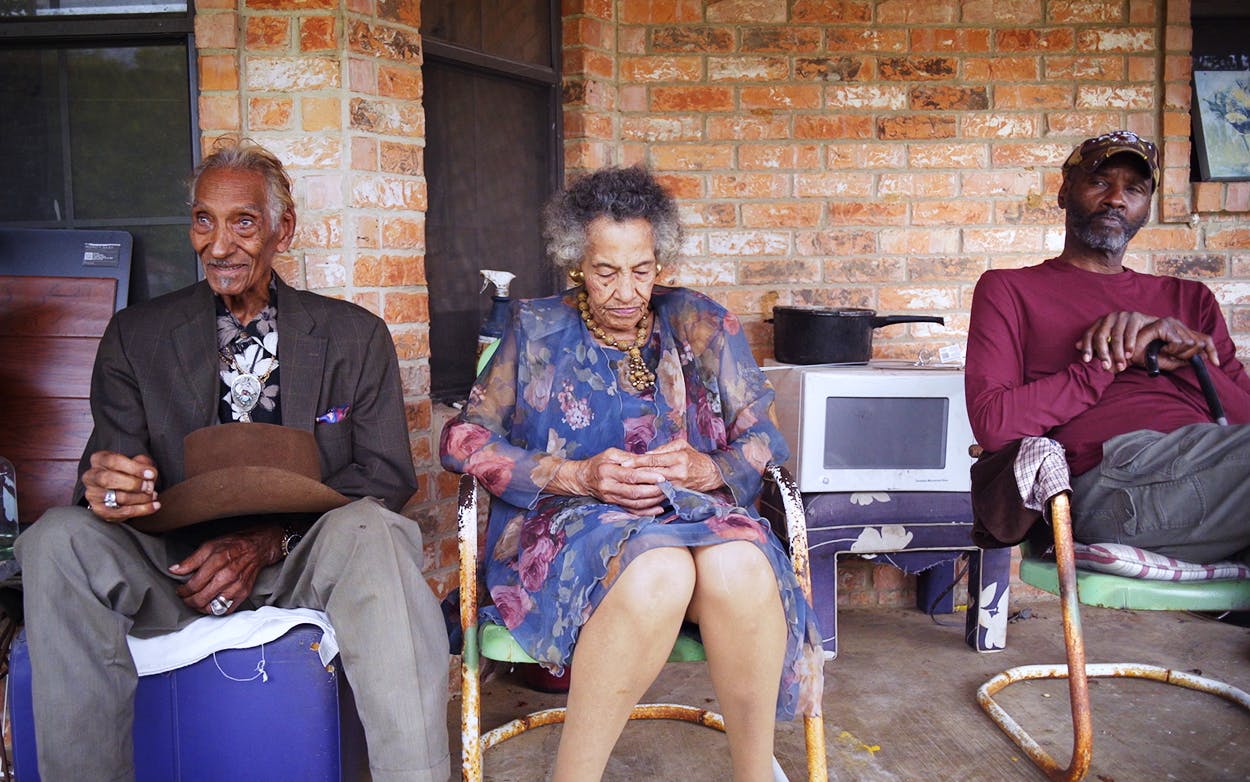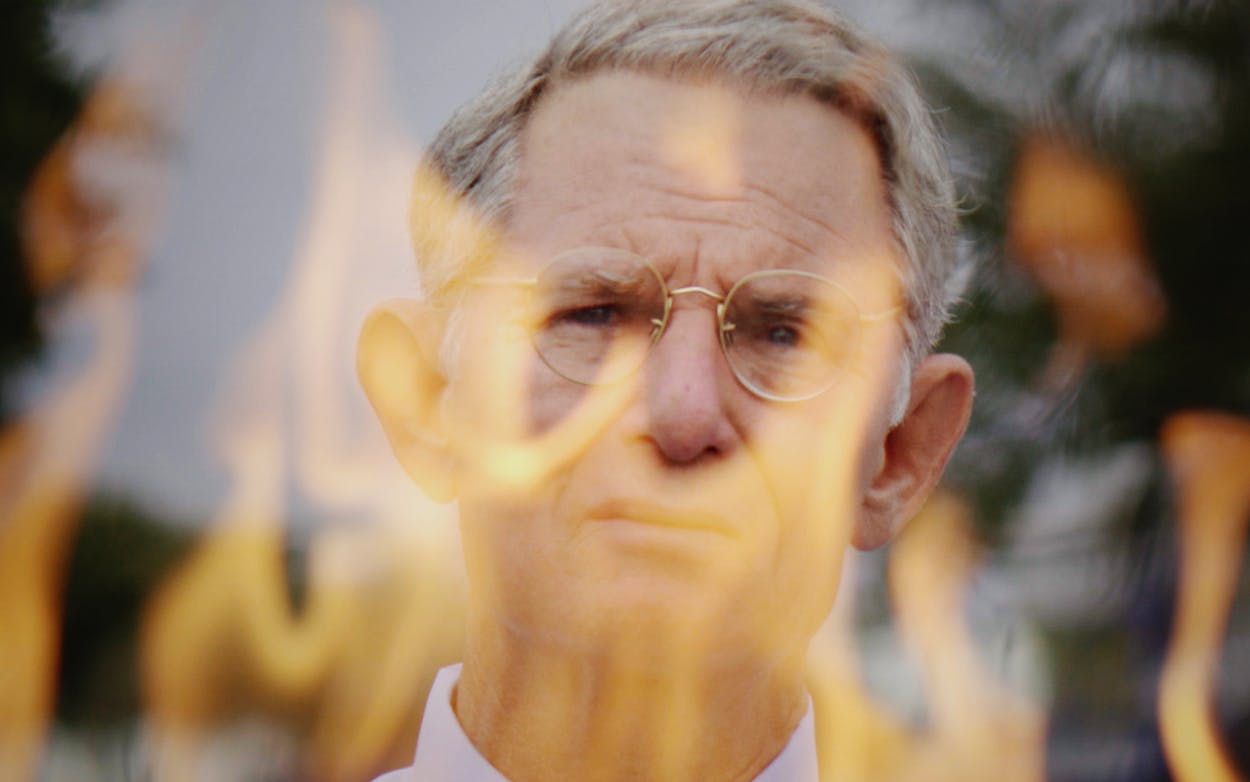There are about nineteen different ways to tell any one story. When I first heard that an elderly minister—who once pastored at a Methodist church in my south Austin neighborhood—had fatally set himself on fire in a deserted parking lot in rural east Texas, I wondered what everyone else wondered: Why would this silver-haired, bespectacled old man do such an extreme thing?
So I set out to solve the mystery of the 79-year-old Charles Moore, who was born in Grand Saline, a small town about 70 miles east of Dallas, and grew up to become a rabble-rousing, poverty-fighting warrior against injustice all over the world, from Chicago to India. I wanted to look past his professed reason—to protest the history of violent racism in his hometown—to figure out why, exactly, he set himself aflame. I interviewed his ex-wives, sons, and friends to write “Man on Fire,” a Texas Monthly feature story published in 2014.
When Joel Fendelman and James Chase Sanchez heard about Moore’s death, they wondered the same thing I did: Why? But Fendelman, then a film student at the University of Texas, and Sanchez, then a grad student at Texas Christian University who was born and raised in Grand Saline, wanted to tell the story in a different way: by looking at the town, the people who live there, and their feelings about race. Their film, also called Man on Fire, debuts nationally on December 17 on PBS.
My search started in Moore’s small-town youth, followed him to his attacking of racial prejudice from the pulpit, his seminary years at SMU, finding a home with a radical Christian group and living in a commune in a Chicago ghetto, and teaching in the slums of India while alienating his wife and two sons as he became obsessed with his work. Moore drifted—Corpus Christi, Houston, Africa—before finally spending ten years at the Methodist church in my neighborhood, where he advocated against the death penalty, welcomed the homeless, and fought for gay rights, gaining national attention.
But when he retired and tried to write his memoirs, the words wouldn’t come. Moore fell into depression and doubt, even wondering if God existed. Though he reconnected with one of his sons and became a doting grandfather, Moore was unhappy, and finally began to formulate a plan. With it, as I wrote in my 2014 piece, he would be “relevant again and as fearless as ever. He would transform the world and give himself completely. He would set himself on fire.”
Moore’s plan went through a bizarre series of changes: He would do it at SMU, he would do it to protest the death penalty, he would do it to protest the church’s policy on gays. He finally settled on doing it in Grand Saline, protesting the town’s racist history and the racism he had seen growing up. “O GRAND SALINE, REPENT OF YOUR RACISM,” he titled his last letter. “What my hometown needs to do is open its heart and doors to black people.” He ended by noting, “Many African Americans were lynched around here, probably some in Grand Saline: hanged, decapitated, and burned. . . I have decided to join them by giving my body to be burned.”
But, local and national historians told me, there was no actual record of such conduct. There was plenty of anecdotal evidence of the feelings of white people about black people, and I spoke with several African Americans who said that, historically, black folks avoided Grand Saline if at all possible. The town had a terrible reputation, but no record of actual lynchings or beheadings.
I was deeply moved by Moore’s whole life, as were his friends, who struggled to make sense of the way he ended it. Why base your rationale on something that ultimately was so unsound? If you’re going to kill yourself for a cause, especially in such a dramatic, painful way, wouldn’t you want to be sure it’s grounded in truth?

According to the documentary Man on Fire, maybe it was. The filmmakers (Fendelman is the director, Sanchez one of the producers) interviewed dozens of people, black and white, as they played dominoes, sat on a front porch, and hung around Grand Saline. What they found was a complicated picture of a complicated town. There’s no evidence Grand Saline had a unique history of racial violence, but Grand Saline is still a town with no black residents (unlike nearby towns like Mineola)—a town that, according to black interviewees young and old, generations of African Americans have avoided out of fear. “It’s not safe,” says one person interviewed in the documentary. “You can’t erase the things that have been done in Grand Saline,” says another. A young white woman who dated a black kid in high school tells of the abuse she suffered from her community. And several white folks say cringe-inducing things like “I think the blacks like to have their own community and there’s not one here.”
Was Grand Saline that bad in the past? Yes, says one white resident, telling of seeing “sundown” signs on the edge of town that read, “Don’t let the sun shine on your black ass.” No, says another—he never saw any signs like that.
There are no easy answers. “There’s no objective proof that Grand Saline had any unique history as regards racism and lynching,” says Sanchez. “We weren’t able to dig up any historical record about racist incidents, but why are all these stories part of the town’s history? Everyone we interviewed had heard these stories and had something to say about it.”
The goal wasn’t to point fingers at Grand Saline, says Fendelman, but to use the town to look at racism in America. “Grand Saline is not unique,” he says. “There’s a Grand Saline in every county in every state.”
Sanchez agrees. “Looking at Grand Saline is a way to look at America.”
Man on Fire is a beautiful film, with understated music and slow-motion pans down the town’s aging streets and into the expansive rooms with tall ceilings and walls full of cowboy hats. You get a real sense of how people in east Texas talk—and think.
Ultimately, the whole issue of why Moore did what he did is a red herring, says Fendelman. “People in Grand Saline say, ‘He was crazy.’ But we know there’s racist things going on in America and we need to deal with that. Near the end of the film the Reverend Jeff Hood says, ‘My concern with Grand Saline is that the easy thing to do is move past it instead of sitting with it.’” The filmmakers want to make people sit with what Moore did—and why he did it.
- More About:
- Film & TV
- Documentary








